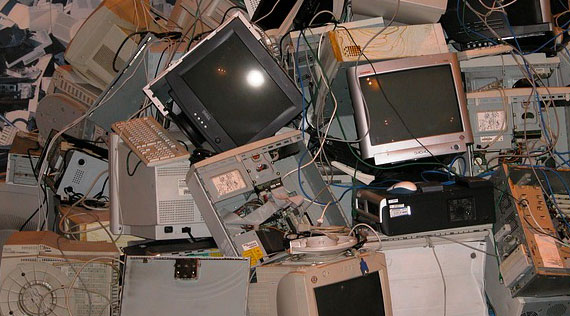
SEATTLE (Waste Advantage): Gold, palladium, silver, and other precious metals (PMs) in manufacturing wastes represent high value, but how PMs are recovered can pose environmental and liability issues. Aerospace and electronics manufacturers and suppliers, in particular, produce volumes of manufacturing wastes that contain varying levels of PMs. With U.S. growth projected at around 2% in 2019 [1,2], there may be an opportunity for more manufacturers and suppliers to review current methods and move to higher ground.
This would include printed circuit board (PCB) manufacturers. Although bookings for PCBs have fallen from recent peaks, shipments have been up about 10% through the third quarter of 2018 [3]. There are two waste streams for recycling and recovery for manufacturers to consider—the electronic waste (e-waste) from manufacturing operations and end-of-life (EOL) product recycling.
On the manufacturing side, a waste audit can identify areas where more PMs might be captured for recovery. This includes both highlevel PM residuals from manufacturing operations— such as precious metals plating solutions, conductive pastes, filters, and sludges—and lower-level PM residual materials—such as syringes, wipes, rags, gloves, solder waste, and floor sweepings. Manufacturing wastes also include damaged parts and returns, as well as finished electronic components and PCBs that are outdated or obsolete. These items may also need to be handled according to industry and government standards.
Security is often a paramount concern. The design of PCBs may be proprietary, classified, or under International Traffic in Arms Regulations (ITAR) restrictions and sensitive components may need to be destroyed or obliterated to render information “irretrievable by any means.” The environmental impact of recycling and recovery efforts is also a key consideration especially for government entities, consumer product companies, and other public corporations.
Beyond e-waste from manufacturing, EOL recycling is a growing concern for OEMs since it can impact operating costs as well as brands. As environmental issues grow, it also can im pact PCB suppliers both directly through new quality or compliance requirements, or indirectly through a change in customer or public perceptions. Whether that is a threat or an opportunity depends on a variety of factors and how companies including recyclers choose to respond. Environmental considerations can often be downplayed, ignored, or simply overshadowed by the drive for maximizing returns, and smaller operations may be more vulnerable.
Of course, manufacturers, suppliers, and recyclers must comply with regulatory requirements and operate profitably in a competitive marketplace to remain in business, yet how companies respond can have long-term consequences.
Courtesy: https://wasteadvantage.com
| Copper Scrap View All | |
| Alternator | 0.31 (0) |
| #1 Copper Bare Bright | 3.65 (0.02) |
| Aluminum Scrap View All | |
| 356 Aluminum Wheels (Clean) | 0.71 (-0.01) |
| 6061 Extrusions | 0.62 (-0.01) |
| Steel Scrap View All | |
| #1 Bundle | 475.00 (0) |
| #1 Busheling | 495.00 (0) |
| Electronics Scrap View All | |